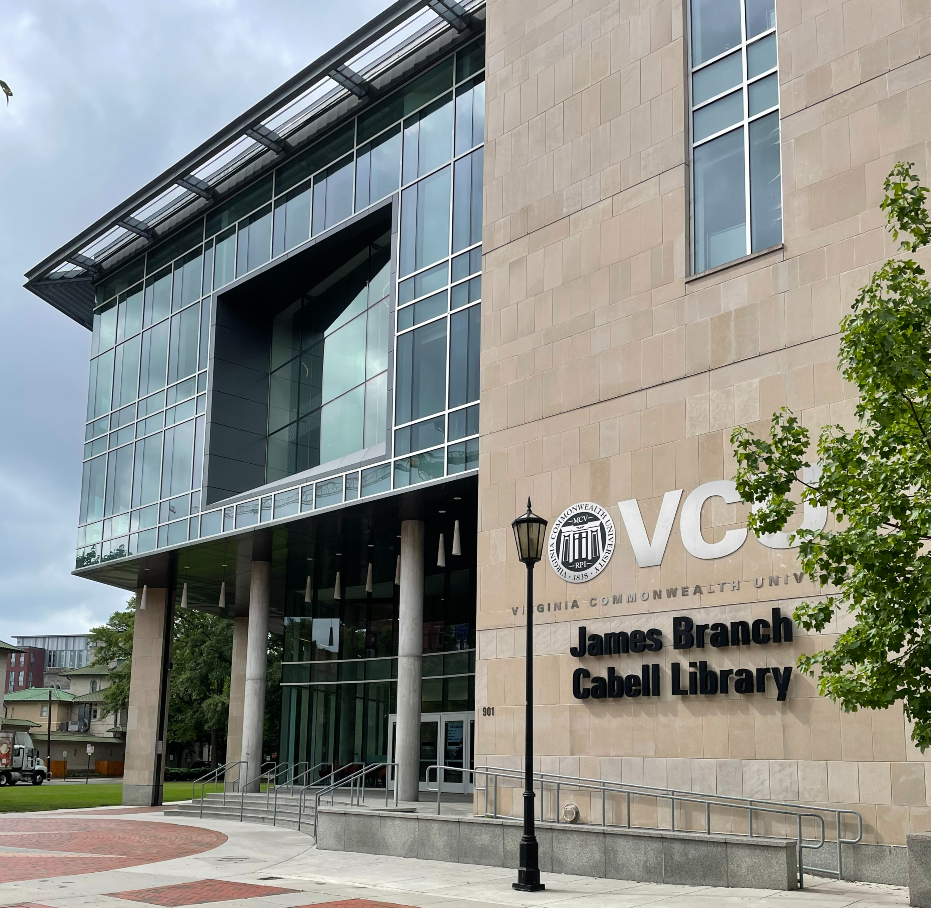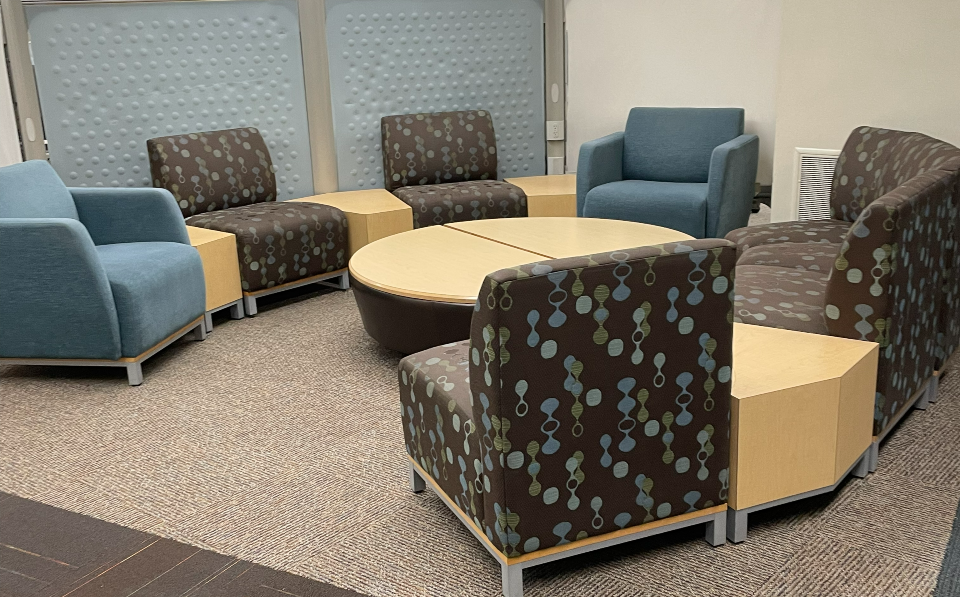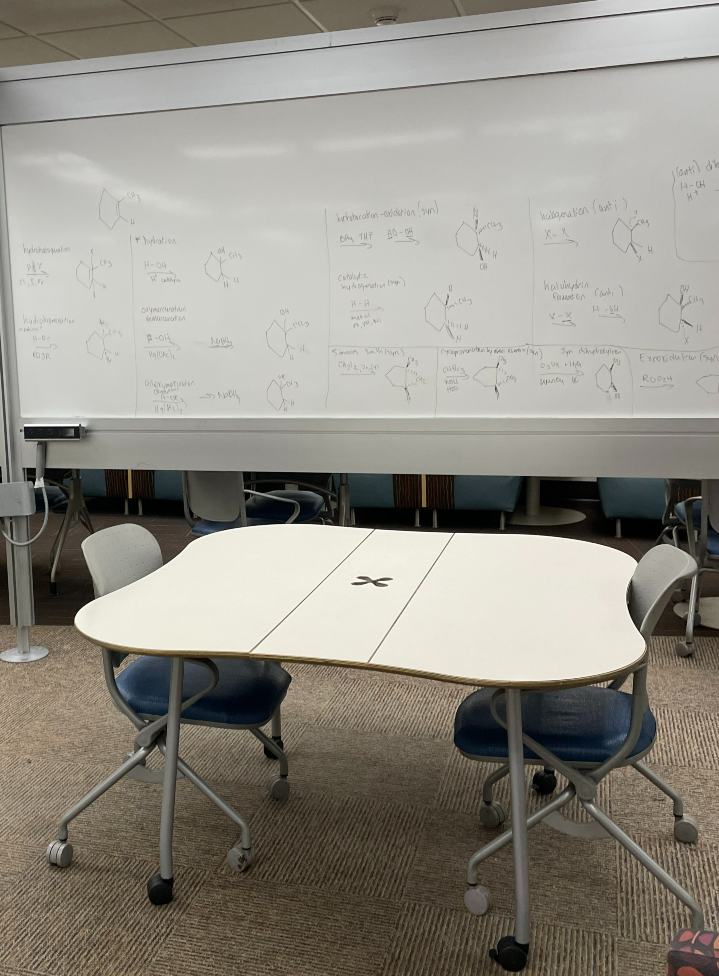
I visited Virginia Commonwealth University (VCU) for my academic library. As a major university library, the mission of the library mainly serves students, research, graduate programs, and faculty (Rubin & Rubin, p. 135). The library is open to the public and some services are available to community members. Consistent with Rubin and Rubin (2020), VCU’s library includes digital collections, databases, research journals, special collections, dissertations, theses and monographs (Rubin & Rubin, p. 135).
Digital Access https://www.library.vcu.edu/
When you first arrive at the website there is a search bar similar to ODU’s OneSearch and the hours the library is open is listed at the top of the page. From the main page, right above the search bar, you can directly link to research guides, databases, journal finder, and pubMed. There is also a chat box to speak with someone at the library. I used the chat to find out if the library was open to the public, the response was immediate. Each link on the site includes an “ask us” and how-to guides. There is information about special projects, events, and exhibits as well links to several blogs. Throughout the website, there are a number of places that staff are listed including the librarian’s role with contact information. There are a wealth of digital collections and exhibits in addition to online access to databases. One interesting digital service is the Community Digitization program for community partners to digitize and make available special collections, archival records, photographs, publications, and other documents.
Space and collections

I visited the James Branch Cabell library which is one of four VCU libraries. It is located in the center of campus and has four floors and a lower level. Each floor has a designated noise level permitted. The fourth floor is for silent study only and you can reserve study carrels. The physical collection is arranged by Library of Congress classification and is divided among the four floors . The majority of the materials are research related but there is a collection of juvenile and youth fiction particularly for the education program. In addition, you can find special archives and collections.

On the first and second floor there are comfortable lounge areas including diner style bench seats and tables. The majority of space in the library is dedicated to individual student and group work spaces. Consistent with Rubin and Rubin (2020), there are student support services intended to promote student success with a lot of open spaces (Rubin & Rubin, p. 136). In particular, there is a technology and IT support center. Collaborative study is focused mainly on the first and second floors. As Rubin and Rubin point out, the library includes a large number of rooms with tables designed for quiet study by individuals and groups (Rubin & Rubin, p. 136). In addition to several classrooms, there are a large number of study and meeting rooms that you can reserve.

Each floor has a large number of individual computer workstations and there are group study areas with whiteboards and big monitor screens to which you can attach your computer. Although you need a VCU ID to use the computers or the catalog, you can request a community member pass at the circulation desk. There is wi-fi available throughout the library and outside. Of interest to the tech savvy, the library has a makerspace, audio studio, gaming studio and innovative media studio/workshop. On the first floor, there are also copiers and scanning stations available.
Special features include an outdoor terrace and an area with picnic tables just across from the entrance to the library. There are three all-gender restrooms in addition to standard restrooms and two lactation rooms. Last but not least, there is a very large Starbucks that plays music throughout the first floor and provides space for people to sit and work.
Reference
Rubin, R. E. & Rubin, R. G. (2020). Foundations of library and information science (5th ed.). ALA Neal-Schuman.
Sharnoff, K. (2022). Outside view of the library [digital photograph]. CC-BY
Sharnoff, K. (2022). Group work with whiteboard [digital photograph]. CC-BY
Sharnoff, K. (2022). Casual lounge area [digital photograph]. CC-BY
Sharnoff, K. (2022). LOC signage [digital photograph]. CC-BY
That is great that you were able to use the chat feature on the website and got a quick response. That means a real person must be in charge of that somewhere. There really is a lot of seating in that library! It would be interesting to see it in action during the school year!
What sorts of group can use the Community Digitization program? If I am a private citizen with a collection of something, am I able to use it and have my resources digitized for others to see and use? Might be an interesting project for a family or someone who keep a lot of journals and diaries. Did you see any examples of who has used it?
It would be so great to visit these school libraries when students are there! I bet we would have a completely different take on some things. So the LOC cataloging takes some getting used to after the students are used to school/public library cataloging. I haven’t come across any school or public libraries using the LOC system. Is that your take?
Oooh, I like the casual furniture. It’s cool that they have a noise level designated for each floor! It seems like their website it pretty comprehensive as well. I like to hear that you were able to access assistance immediately via the chat. I wonder if they take shifts working that service, or if one person is stuck doing it all day?!
I am interested to know how much use the Starbucks gets. I am doing my futures research on “fast casual” and academic libraries, and have been reading a lot about library cafes and “alternative” workspaces in library, so it is interesting to see that there is a Starbucks taking up an entire floor!
I really like the separation of spaces according to noise levels. That allows people to use the library in different facets without excessive shushing or animosity. It looks like there ‘s a good mix of space for academic study, collaboration, and just hanging out.